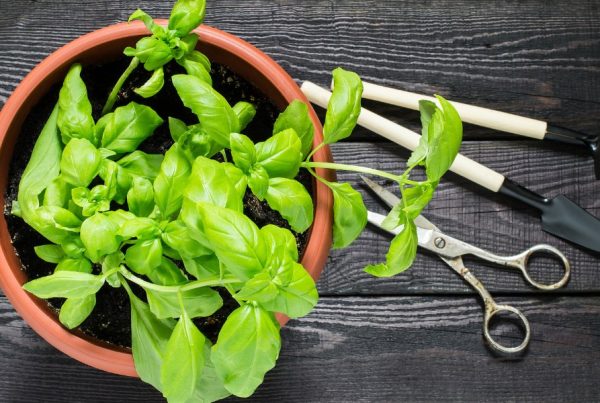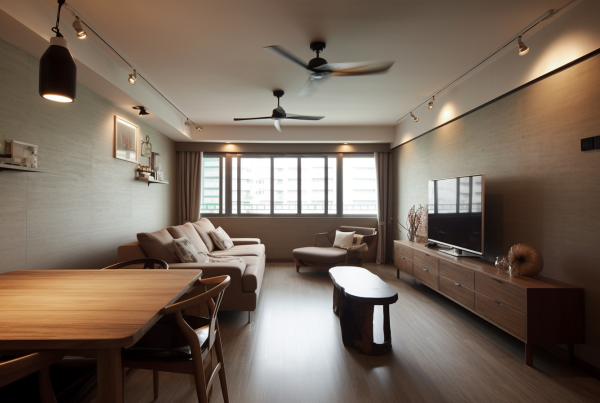Interiorscaping involves the use of greeneries indoors, presenting a refreshing touch of nature in built environments. Interiorscaping has recently gained popularity in Singapore as urban spaces are increasingly embracing the harmonious blend between nature and modern living.
With the dense population of the city, high-rise buildings, interiorscaping refreshingly brings greenery indoors, adding beauty and enhancing environmental benefits in living and working spaces. Many varieties of plants, among which ferns, philodendrons, and palms, love indoor environments because of Singapore’s tropical climate; they help clean the air and increase humidity, ideal for air-conditioned environments.

This trend is also followed by the commitment of Singapore to green spaces, whereby offices, malls, and homes increasingly host lush indoor gardens, walls, and installations of planted features. Interiorscaping here not only beautifies the space but fulfills the metropolis’s commitment to going green by affording contact with nature within the city’s concrete walls.
While the processes of urbanization, technological development, and changes in lifestyle take us away from nature, indoor plants fill this gap by bringing outdoors into our dwelling and professional environments. Indoor plants are much more than the realm of aesthetic judgment for interior designers; they are a tool to improve indoor environments through the creation of visual spaces full of life and health.
Principles of Interiorscaping
Balance involves the visual distribution of objects, where each plant or decor piece should look stable and balanced within the space.
Proportion refers to the size relationship between plants, pots, and surrounding furniture. Using the rule of thirds can enhance this sense of proportion, creating a visually pleasing arrangement.
Rhythm is achieved by creating a sense of movement, perhaps through the varied placement of plants, their sizes, shapes, or colors, capturing attention as the eye flows through the space.
Scale ensures that plants and design elements are appropriately sized for the setting. For instance, tree height in a mall should be measured so it doesn’t obstruct views or crowd the space.
Unity is the cohesion of similar elements, like grouping plants of the same family, which creates a unified look without overwhelming the space with sameness.
Dominance draws focus to a specific feature, such as a striking plant or tree, either through contrasting color, height, or pattern.
Harmony celebrates the individual beauty of each element while blending them into a unified design, ensuring that each plant complements the overall aesthetic.
Choosing the Right Indoor Plants
Plants bring life and beauty, but they need careful selection and care to thrive indoors. Ideal indoor plants should adapt to low, indirect sunlight, maintain growth in limited air circulation, and flourish in a relatively humid setting. Airflow is essential to their health, while rooms with ample light let plants showcase their lush colors and, for some, beautiful blooms. By selecting plants suited to specific environments—such as ferns, philodendrons, or bonsai for low-light rooms—you can transform spaces into calming, nature-inspired areas without relying on costly décor.
Key Characteristics of Ideal Indoor Plants
An ideal indoor plant should:
- Be evergreen and capable of enduring indoor conditions.
- Tolerate fluctuations in temperature.
- Thrive in containers.
- Survive occasional neglect, as indoor plants may not always receive consistent care.
Benefits of Indoor Plants
Indoor plants offer a range of benefits that extend beyond their natural beauty, enriching both our living spaces and well-being. One of the most valuable aspects of indoor plants is their ability to enhance air quality. Many houseplants naturally filter airborne pollutants, helping to create a cleaner, fresher environment. This makes them not only a stylish addition but also a functional one, supporting healthier indoor spaces.
Beyond their air-purifying qualities, indoor plants serve practical design purposes as well. They can act as natural room dividers or visual barriers, subtly separating areas within a room without the need for additional furniture or partitions. Plants placed strategically along walls, corners, or around seating areas also add depth, creating the illusion of a larger space and making rooms feel more open and inviting.

Plants also introduce dynamic elements of color, texture, and pattern to interiors, adding richness and diversity that other decor often cannot match. The green tones of foliage contrast beautifully with various interior color schemes, while textured leaves and unique shapes add visual interest. Additionally, indoor plants contribute to improved comfort by reducing glare, buffering noise, and even adding humidity to the air, particularly in dry, air-conditioned rooms. In this way, they create an atmosphere of calm and well-being, enhancing the indoor environment on multiple levels.
Historical Use of Indoor Plants
The concept of using plants indoors dates back thousands of years. Ancient Egyptians, for instance, decorated with potted palms, while the Babylonians and Chinese cultivated plants in containers. In India, the tradition of keeping potted plants is seen on balconies, terraces, and at entrances to bring life and festivity.
Selecting and Sourcing Indoor Plants
When purchasing indoor plants, it’s essential to choose healthy specimens from reliable sources. Prefer local nurseries and check the health of the plants to avoid pests or diseases. Purchase during mild seasons to help plants adapt to their new environment with minimal stress. Choose mature plants that are already potted to avoid transplanting shock and aim for those with bright, healthy foliage.
Principles of Interior Plant Design
When decorating with plants, consider principles like scale, color, and texture to ensure harmony with the space. Grouping plants of varying heights or colors can create focal points, while selecting contrasting colors can make plants stand out against walls or furniture. Place large plants in areas with sufficient space to avoid overcrowding and enhance their natural beauty.
Selecting Containers and Planters
Choosing the right planter is crucial. Containers come in various materials—ceramic, terracotta, metal, and plastic. While some materials may be more costly, they can enhance the aesthetic appeal if they harmonize with the surroundings. Avoid brightly colored pots that might detract from the natural beauty of plants, and select sizes that balance well with the plant’s height and growth pattern.
Pot Culture: Growing Plants in Containers
Growing plants in pots allows flexibility and enables cultivation in confined spaces. Pot culture is especially suitable for urban dwellers with limited outdoor access, and containers can be moved indoors or out as needed.
Maintenance of Indoor Plants
Indoor plants that are well taken care of will thrive and will maintain the plants’ lush and lively appeal to add charm to a space. First, choosing the right pot is very important because one wants porous containers that can allow proper aeration to the roots to prevent problems such as root rot. Containers should have adequate draining to prevent waterlogging that may damage plants. Often, plants need to be repotted just so roots can grow, or else their general health-even beauty-suffers.
Different plants have different needs, and those in sunnier, warmer locations need more water than a plant would require that sits in a shaded area. Consistency is the key to this, so being able to establish a schedule for each plant’s exact needs helps to keep it healthy. The use of a balanced liquid fertilizer every few weeks also will help give them added nutrition they may not obtain otherwise to keep them growing and healthy.
Regular pest checks are key to the health of your plants. Mealybugs, spider mites, and aphids will invade a plant in no time, but an early intervention of washing or light spraying with a mild insecticidal soap can prevent the spread of an invasion. This kind of attentive care means indoor plants do more than add a pretty face but bring life and hardiness to a room, beautifying it with their organic charm.
Indoor plants beautify and add life indoors, along with numerous environmental benefits. We reconnect with nature in our daily lives through the conscious variety and emplacement of plants to create an inspired space for calm and heightened well-being. Whether a single potted fern on your desk or a complete indoor garden in itself, it enriches our surroundings, making the interiors more beautiful, healthier, and welcoming.








